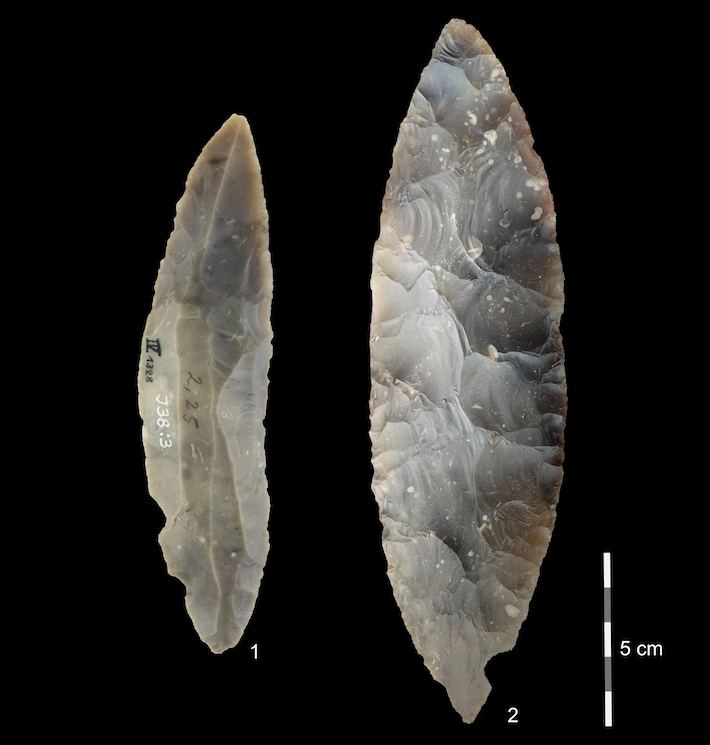 RANIS, GERMANY—A new excavation in an untouched area of Ilsenhöhle, a cave in central Germany, has uncovered the 47,400-year-old bones of modern humans, according to a Cosmos Magazine report. An international team of researchers led by Dorothea Mylopotamitaki, Marcel Weiss, Helen Fewlass, and Elena Irene Zavala of the Max Planck Institute for Evolutionary Anthropology identified the modern human bones through genetic and proteomic analysis. It had been previously thought, based upon an excavation conducted in the 1930s, that the cave and surrounding area had been occupied by Neanderthals alone. “It turns out that stone artifacts that were thought to be produced by Neanderthals were in fact part of the early Homo sapiens tool kit,” said Jean-Jacques Hublin of the Collège de France. “This fundamentally changes our previous knowledge about this time period: Homo sapiens reached northwestern Europe long before Neanderthal disappearance in southwestern Europe,” he explained. The bones of other mammals in the cave were also identified, including reindeer, horses, and woolly rhinoceros likely hunted by modern humans, and denning hyenas and hibernating cave bears. Read the original scholarly articles about this research in Nature Communications and Nature Ecology & Evolution. To read about the domestic spaces of Europe's earliest modern humans, go to "Letter from France: Structural Integrity."
RANIS, GERMANY—A new excavation in an untouched area of Ilsenhöhle, a cave in central Germany, has uncovered the 47,400-year-old bones of modern humans, according to a Cosmos Magazine report. An international team of researchers led by Dorothea Mylopotamitaki, Marcel Weiss, Helen Fewlass, and Elena Irene Zavala of the Max Planck Institute for Evolutionary Anthropology identified the modern human bones through genetic and proteomic analysis. It had been previously thought, based upon an excavation conducted in the 1930s, that the cave and surrounding area had been occupied by Neanderthals alone. “It turns out that stone artifacts that were thought to be produced by Neanderthals were in fact part of the early Homo sapiens tool kit,” said Jean-Jacques Hublin of the Collège de France. “This fundamentally changes our previous knowledge about this time period: Homo sapiens reached northwestern Europe long before Neanderthal disappearance in southwestern Europe,” he explained. The bones of other mammals in the cave were also identified, including reindeer, horses, and woolly rhinoceros likely hunted by modern humans, and denning hyenas and hibernating cave bears. Read the original scholarly articles about this research in Nature Communications and Nature Ecology & Evolution. To read about the domestic spaces of Europe's earliest modern humans, go to "Letter from France: Structural Integrity."
When Did Modern Humans Arrive in Northern Europe?
